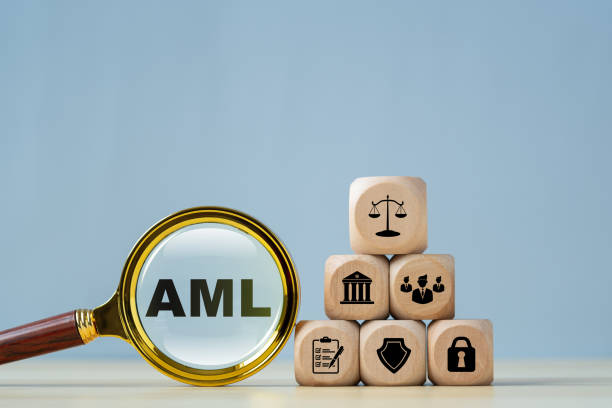Europe’s newly empowered anti-money laundering watchdog, the EU Anti-Money Laundering Authority (AMLA), has identified crypto assets as its most pressing concern. In recent remarks, AMLA chair Bruna Szego underscored the risks posed by cryptocurrencies, citing their potential for money laundering and terrorism financing.
Fragmented Markets and New Licences
Since the start of this year, Europe has introduced a unified licensing framework for crypto asset service providers (CASPs). This was intended to establish consistency and improve oversight across member states. However, Szego warned that the region’s fragmented market could still become a haven for illicit activity.
With many CASPs now seeking EU-wide licences, the risk of uneven regulation is high. Some countries may impose stricter controls, while others remain lax. The result is potentially inconsistent enforcement—exactly the kind AMLA was designed to prevent.
Why Crypto Is Higher Risk
Szego pointed to several built-in vulnerabilities of crypto markets:
- Anonymous ownership: Many crypto wallets lack clear beneficiary identification, opening doors to hidden financial activities.
- Rapid and borderless transfers: Digital assets can move swiftly across national boundaries, bypassing traditional controls.
- Foreign ownership concerns: AMLA must scrutinise who controls CASPs, especially where beneficial owners may be linked to illicit networks.
These factors combine to make crypto a uniquely challenging domain for anti-money-laundering enforcement, Szego said.
To tackle these challenges, Szego outlined several proactive steps:
- A thematic review of national authorities’ supervision of crypto.
- A joint market analysis with intelligence units to better track illicit flows.
These initiatives aim to harmonise oversight and close gaps in enforcement.
AMLA’s Mandate Begins in July
Although AMLA was established last year, it only formally began its operations on 1 July 2025. With full legal powers now in effect, AMLA has signalled that a strong focus on crypto will be part of its early agenda.
In a recent statement, the authority highlighted the risk of “inconsistent controls” among national regulators. This reinforces Szego’s earlier comments and sets the stage for coordinated action.
Scrutiny on Ownership
A key priority for AMLA will be identifying the beneficial owners behind crypto exchanges. “We need to be sure the owners are not involved in money laundering or terrorism finance,” Szego said. Boardroom access and obscure shareholding structures can offer opportunities for illicit money to flow under the radar. Consequently, CASP transparency is not optional—it is mandatory.
France Opens Probe into Binance
Crypto’s legal entanglements are already becoming visible. Earlier this year, France’s public prosecutor launched an investigation into Binance, the world’s largest crypto exchange, over alleged breaches of EU money laundering and terrorist financing regulations. Binance has denied any wrongdoing.
These legal challenges echo the broader global fight on crypto regulation. Earlier controversies around Binance’s co-founder, Changpeng Zhao—who stepped down in 2023 and was sentenced to four months in prison by the US—underscore the landmark consequences for lax compliance.
Direct Supervision of High‑Risk Institutions
By 2028, AMLA will begin direct supervision over around 40 of the largest and riskiest financial institutions in the EU. Szego confirmed that “some crypto asset service providers are likely to be among the initial 40”. That inclusion would mark a turning point in how the EU treats crypto—elevating it to the same regulatory level as major banks and insurers.
Global Context and FATF Concerns Despite Diverging Approaches Across the Atlantic
AMLA’s statements echo those of the Financial Action Task Force (FATF), which has recently warned that “many parts of the world continue to struggle” with crypto regulation. According to FATF, around 75 per cent of jurisdictions still fall short of meeting global standards. This lack of compliance heightens systemic risks and complicates coordinated action.
Interestingly, the EU’s assertive approach contrasts sharply with the stance of some other jurisdictions. The United States, particularly under the current administration, has shown a more crypto‑friendly tenor. Enforcement actions have eased, and legislation aiming to integrate digital assets into mainstream finance is advancing. This divergence highlights competing regulatory philosophies at a time when technology knows no borders.
Can AMLA Make a Difference?
Europe is taking a bold stance on crypto regulation. By placing CASPs under direct supervision, pushing for transparency in ownership, and aligning national standards, AMLA is signalling a shift from fragmented caution to collective control. This is a welcome development.
Regulators often trail behind innovation, and in digital finance, hesitation can be costly. If AMLA can enforce its framework effectively, it may not only reduce money laundering risks—but also boost legitimacy for legitimate crypto actors. As European politicians tout a digital‑first economy, the key will be striking a balance between innovation and integrity. AMLA’s early moves suggest a clear priority: clean money matters more than unchecked growth.Reference: Reporting based on information from the Financial Times.


